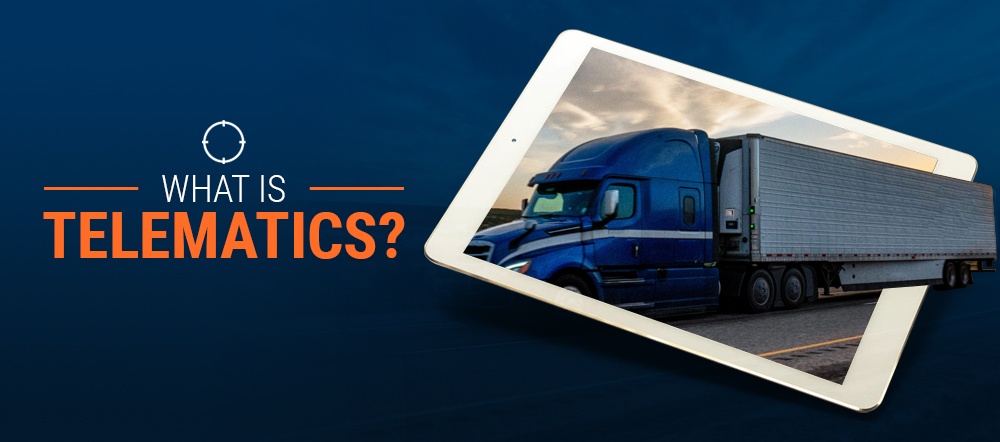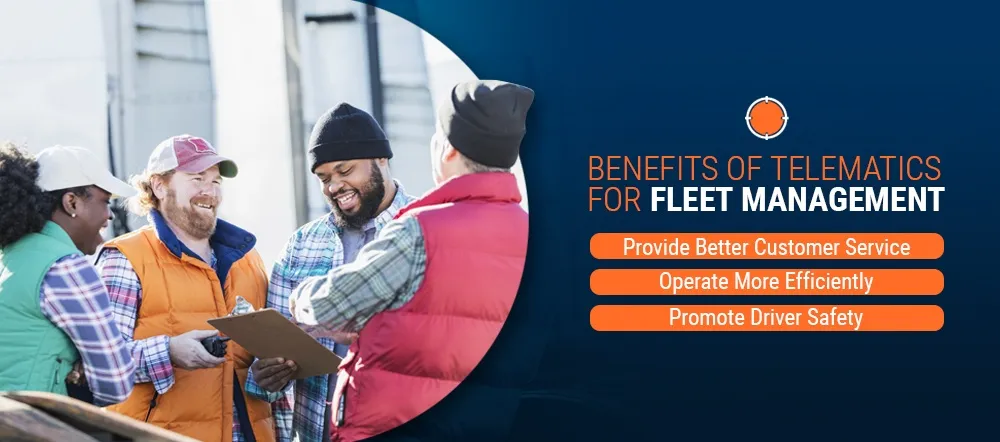

As a business owner or fleet manager, vehicle telematics can help you transform your fleet into a safer, more efficient operation. It can also empower you with the data you need to make better decisions about your business and provide your customers with the best possible service.
In this guide, we’ll discuss what telematics is, how it works and why it is the right choice for your fleet.
Telematics refers to the transmission of electronically collected information over a long distance from a relevant point of interest — such as a vehicle — to an end-user. Vehicle telematics is a method of monitoring and gathering the logistics of a vehicle or fleet. Telematics technology utilizes computer systems that collect data in several key areas of operation, including driver location and behavior, fuel level and vehicle status, route tracking and more. You may have even encountered telematics in your personal life. For example, telematics technology in cars can help auto insurance companies gather data and analyze your driving habits. Telematics technology is also behind many modern-day car features, like active weather alerts.
Several industries and vehicles can utilize tracking via telematics technology, including:
Whether you manage a few vehicles or an entire fleet, any company that regularly transports assets can benefit from using a telematics system.
Depending on the features and settings you use, telematics technology works to collect, transfer and help you make sense of important data from the vehicles in your fleet.
Here’s how it works:
The data collected by the telematics varies, depending on the company you work with and the features you choose to track. Depending on your specific needs, you can filter which features you would like to manage, as well as which data is included in regular reports. Fleet managers and business owners can monitor things like:

So, what kind of benefits can you expect when you implement a telematics solution into your operations? Some of the benefits of telematics systems include the ability to provide better customer service, operate more efficiently and promote driver safety:
Offering quality customer service is an essential part of running your business. Occasional delays of arrival times are often unavoidable due to uncontrollable factors, such as road closures or inclement weather.
With a telematics monitoring system in place, you can provide your customers with better customer service by knowing where a customer’s crew is throughout the entire process and keeping them informed about any changes in status or anticipated arrival time. If your drivers are delivering a shipment, you can also verify that assets are delivered to the right location.
With the right telematics system, you can operate more efficiently and reduce the amount of time and money it takes to operate your business. Here are just a few examples of how telematics devices can improve your operations:
As a fleet manager, the safety and wellbeing of your drivers — as well as the people they share the road with — is a top priority. Telematics can help keep your team and your shipment safe and sound. Here are a few of the ways telematics encourages driver safety:
Track Your Truck provides business owners and fleet managers with telematics solutions that can help you maximize driver safety and productivity, reduce operational costs, streamline operations and provide your clientele with better customer service.
To learn more about what Track Your Truck telematics and GPS fleet management can do for your business, request a demo or a quote today.